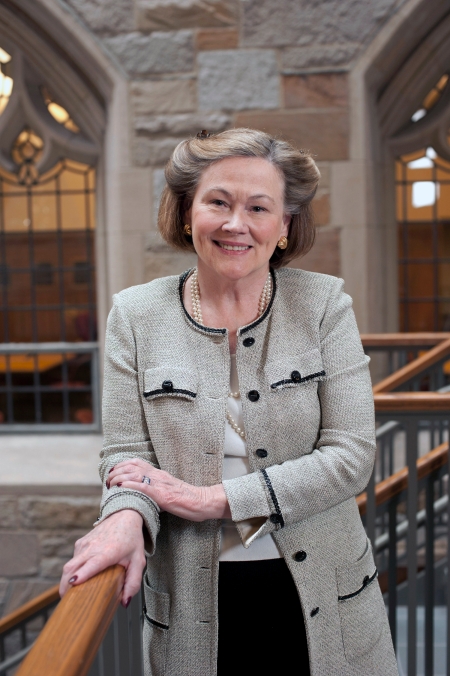
By
For generations, it’s been the accepted norm, and hope, of Americans: Stop working at 65, collect Social Security, and enjoy retirement. But a new study from the Center for Retirement Research at Boston College says following that plan will cost you financially.
“If you retire at 65, you get 70 percent of what you’d get at age 70,” says Drucker Professor of Management Sciences Alicia Munnell, director of the center. “It’s the best-kept secret in town that the way you get the highest monthly benefit from Social Security is to wait until 70, and it’s so much higher. Nobody knows that, and if we really think it’s important for people to work longer, it’d be really nice to tell them that it makes a huge difference on how much they get from Social Security.”
The report, “Social Security’s Real Retirement Age Is 70,” cites the Delayed Retirement Credit, which has gotten more generous though the years. Initially rewarding potential retirees with a 1 percent increase in monthly payments for those who retired at 66 years old instead of 65, says Munnell, the DRC was boosted in 1983 to give those who retired at 66 years old an additional 3 percent in monthly benefits, and an additional 6 percent for those who retired at 67.
“But that didn’t really compensate for the fact that you were going to get your benefit for one or two years less, and so they gradually increased that delayed retirement benefit over time to 8 percent,” says Munnell. “At 8 percent, it’s an amount such that it compensates fully for the delayed claiming.”
Munnell illustrates the point with an example, using $1,000 as the top end monthly payment at age 70: Because benefits paid before age 70 are actuarially reduced, a retiree would receive $818 at age 67, $707 at 65, and just $568 for someone who claims at age 62. Lifetime benefits are roughly equal for any claiming age between 62 — the earliest claiming age — and 70.
“So at 62 they’re lower but you get them for eight years longer,” says Munnell. “At 70, they’re a lot higher – they’re actually 76 percent higher – but you get them for eight years less and the two offset one another perfectly. Everything in between seems irrelevant.”
Although an advocate of working later in life, Munnell is well aware it’s not possible for everyone to work until 70.
“Some people have much tougher jobs that are sometimes physically demanding. Or they have health problems. Or they face discrimination. And there are weak labor markets. So it’s hard for everybody to stay and I understand that. But for the bulk of the population, working longer is an option — they need to be told that there’s this payoff to working longer and most people don’t know it.”
Munnell says if you can’t work until 70, do whatever you can to delay tapping into your retirement benefits.
“If you can’t work until that age and you have some money in your 401(k), you should use that to support yourself until you can get to 70 because then you get the most of this monthly income,” says Munnell. “In your 60s, you can take a little extra work and do stuff on the side, and you won’t realize these benefits are so low. But when you get into your 70s, you tend to have this being your only source of income, and it’s too little if you claim that early."
The latest CRR report comes on the heels of a study the center released last year that refuted the idea older workers were crowding out younger workers, even during the 2008 recession. Examining gender, state information, and education data and other factors, Munnell and co-author April Yanyuan Wu found nothing to support the belief that there is a fixed number of jobs – a theory known as the “lump of labor.”
“This is a forced assumption,” says Wu, a CRR research economist. “The whole ‘lump of labor’ operates on the fallacy that economies are a fixed box, that if we are adding one job in, then we are taking one job out. But the whole economy is a dynamic process, so this fixed box theory is false.”
Young workers (under 25 years old) historically have a higher unemployment rate than those in other age groups, the researchers note. Industries in which young workers are typically employed, such as manufacturing, were hit hard by the recession and its aftermath, which helped fuel the “lump of labor” explanation.
“We were worried in the shorter time period when the whole economy was in a stagnant stage if there might be some crowding out, but we found none,” Wu says. “When the economy is good, there are more opportunities for both the older and the young. When the economy is good, wages increase as well — that happens to both age groups. But there’s no crowding out.”
For more on the Center for Retirement Research at Boston College, see www.bc.edu/crr.



